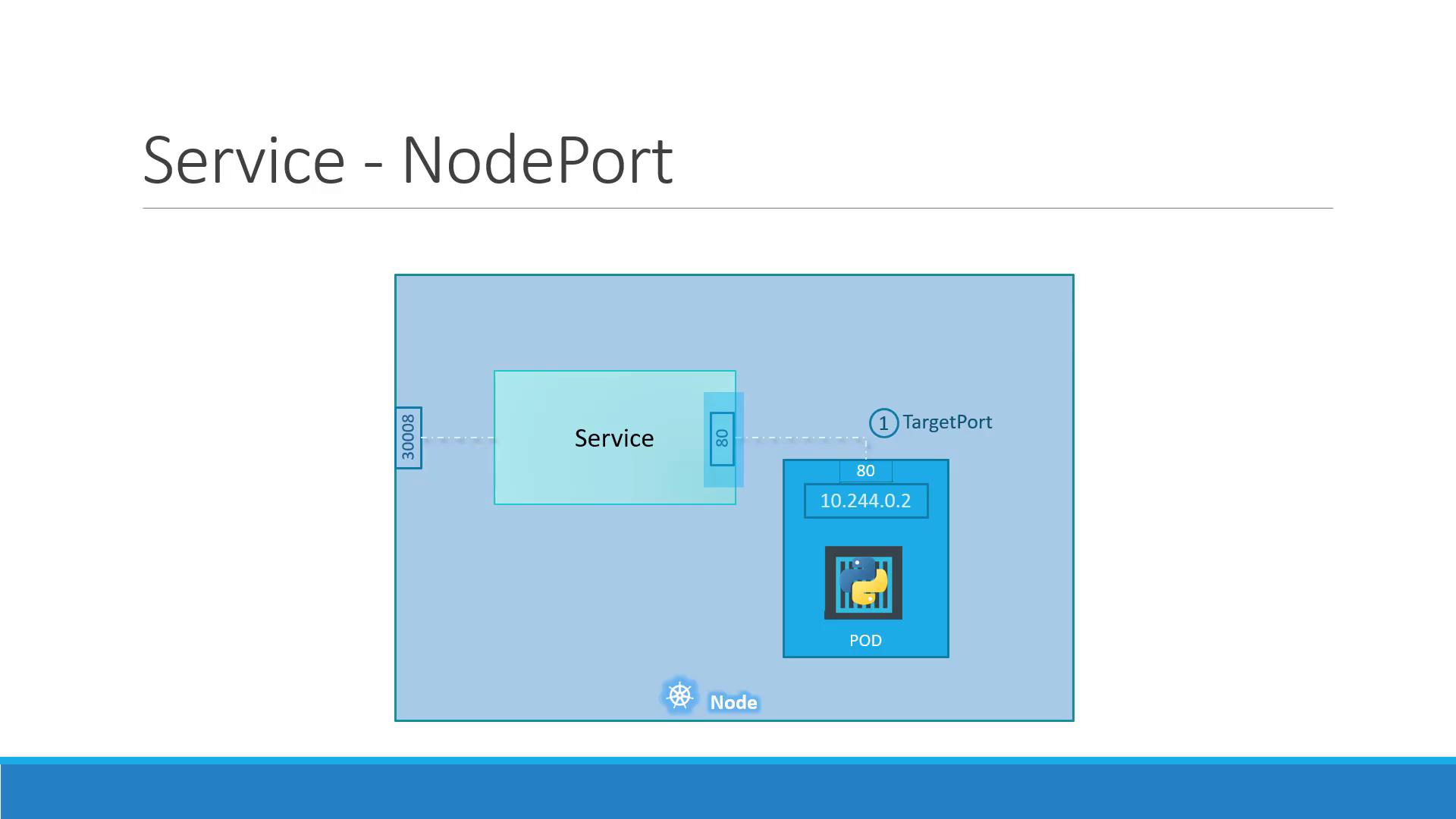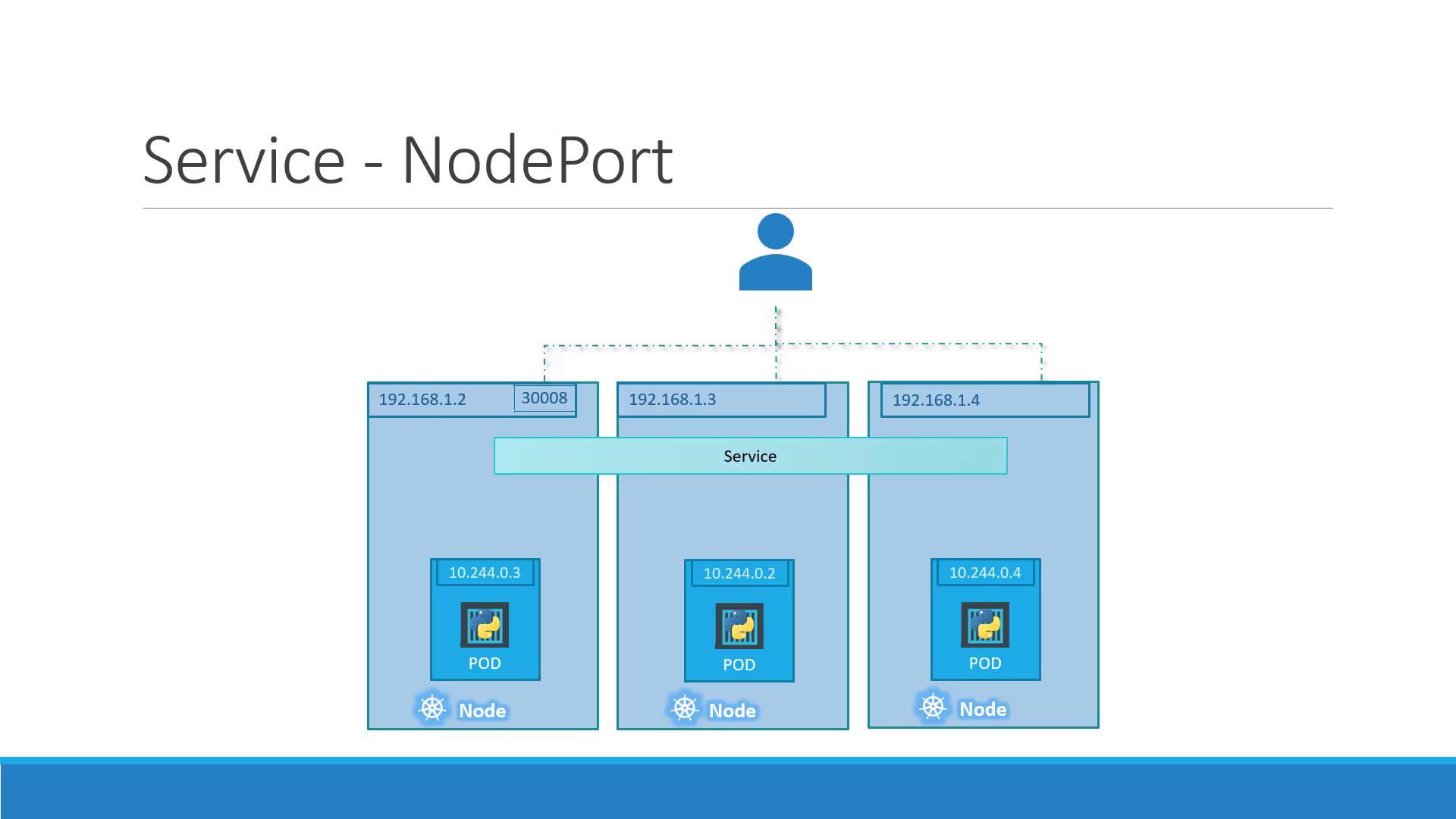Docker Certified Associate Exam Course
Kubernetes
Services NodePort
Welcome to this tutorial on Kubernetes Services. In this guide, we'll focus on the NodePort type, which enables external traffic to reach Pods through a port on each Node. Kubernetes Services provide stable network endpoints for Pods, enabling reliable communication both within the cluster and from outside clients.
Why Use Kubernetes Services?
Kubernetes Services decouple the front-end, back-end, and data-layer Pods, offering:
- Stable endpoints: Consistent IPs or DNS names for Pods that may be recreated.
- Load balancing: Distributes traffic evenly across multiple Pods.
- Discoverability: Native service discovery within the cluster network.
Applications typically consist of:
- Front-end Pods serving user interfaces
- Back-end Pods processing business logic
- Pods connecting to external data sources
With Services, these components can communicate without hardcoding Pod IPs.
External Access Use Case
By default, Pod IPs (e.g., 10.244.0.2) are only reachable inside the cluster network. To access a web server Pod from your laptop (192.168.1.10) without SSH’ing into the Node (192.168.1.2), you need a NodePort Service which maps a port on the Node to the Pod’s port.
curl http://192.168.1.2:30008
Hello World!
| Service Type | Use Case | Example Configuration |
|---|---|---|
| ClusterIP | Internal-only service for Pod-to-Pod communication | type: ClusterIP |
| NodePort | Exposes Pod on a port across all Nodes for external access | type: NodePort<br/>nodePort: 30008 |
| LoadBalancer | Provisions a cloud load balancer to distribute external traffic | type: LoadBalancer |
Note
NodePort ranges from 30000 to 32767 by default. You can customize this in the API server flags.

NodePort Service Ports Explained
A NodePort Service uses three port definitions:
- targetPort: Port on the Pod (e.g., 80)
- port: Virtual Service port inside the cluster (e.g., 80)
- nodePort: Port on each Node, accessible externally (e.g., 30008)
Traffic to <NodeIP>:<nodePort> → Service → port → Pod at targetPort.
Defining a NodePort Service
- Create a Pod with labels:
# pod-definition.yaml
apiVersion: v1
kind: Pod
metadata:
name: myapp-pod
labels:
app: myapp
component: frontend
spec:
containers:
- name: nginx
image: nginx:latest
ports:
- containerPort: 80
- Define the NodePort Service, matching the Pod labels:
# service-definition.yaml
apiVersion: v1
kind: Service
metadata:
name: myapp-service
spec:
type: NodePort
selector:
app: myapp
component: frontend
ports:
- port: 80
targetPort: 80
nodePort: 30008
- Deploy and Verify:
kubectl apply -f pod-definition.yaml
kubectl apply -f service-definition.yaml
kubectl get svc
Expected output:
NAME TYPE CLUSTER-IP EXTERNAL-IP PORT(S) AGE
kubernetes ClusterIP 10.96.0.1 <none> 443/TCP 16d
myapp-service NodePort 10.106.127.123 <none> 80:30008/TCP 5m
Access the application:
curl http://192.168.1.2:30008
<html>
<head><title>Welcome to nginx!</title></head>
<body><h1>Welcome to nginx!</h1></body>
</html>
Warning
Exposing high ports on Nodes can pose security risks. Ensure proper firewall rules and network policies are in place.
Scaling with Multiple Pods and Nodes
In production, you’ll run multiple Pod replicas for high availability. A NodePort Service automatically load-balances incoming traffic across all Pods that match its selector, even when spread across multiple Nodes.

Simply scale your Deployment or Pod replicas:
kubectl scale deployment myapp-deployment --replicas=3
Now, requests to any Node at NodeIP:30008 are distributed across all 3 Pods.
Summary
- NodePort Services expose Pod ports on each Node for external access.
- Key fields:
type: NodePort,port,targetPort, andnodePort. - Match Services to Pods via label
selector. - Kubernetes handles load balancing across Pods and Nodes automatically.
Next, explore the demo to see NodePort Services in action!
Links and References
Watch Video
Watch video content